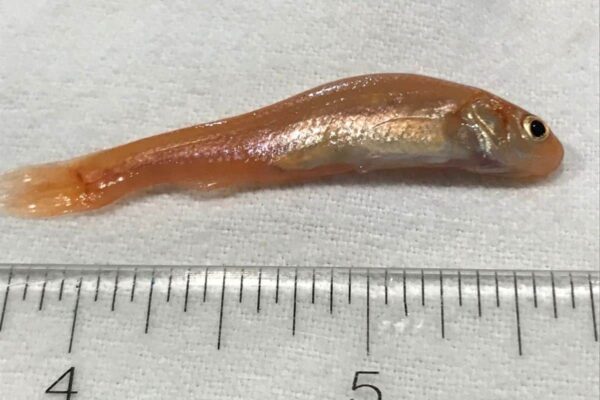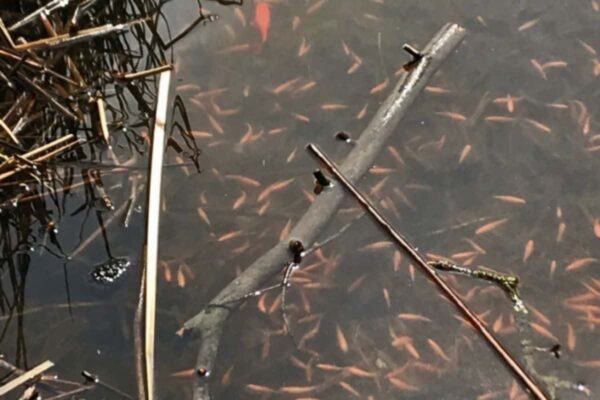Rosy red minnow
About This Species
Rosy red minnow is a variety of Fathead minnow that has been bred for its colour. This species is native to Central and Eastern North America. It appears occasionally in waterways around BC, likely after having been intentionally dumped by pet owners.
The potential impact of Rosy red minnows on BC’s aquatic habitats is not well understood, but these fish can readily breed in BC waterways. If they were to spread they would likely compete with other small fish for food and habitat, and feed on native invertebrates and algae. Many species of exotic aquarium fish are dumped into BC waterways each year, but only some of them are able to survive and breed. Rosy red minnows are designated as a Provincial EDRR species by the BC Provincial Priority Invasive Species List.
How to Identify
Rosy red minnows grow to 2-6 cm long. Their sides and bellies are silver, while their backs, tails, and head are an orange-red or pink in colour. They have large eyes with a metallic iris. Their fins are translucent.

Take Action
Prevention is the best approach.
-
If you need advice about invasive species on your property or you are concerned about reported invasives in your local area, contact your local government or regional invasive species organization.

Don't Let It Loose
Learn about best practices
Invasive species are plants, animals or other organisms that are not native to BC, and have serious impacts on our environment, economy and society. Never release your plants and animals into the wild or dump aquariums or water garden debris into rivers, streams, lakes or storm sewers!

Clean, Drain, Dry
Learn about best practices
The Clean Drain Dry program empowers you to help reduce the spread of invasive plants and organisms to BC waters by following the clean, drain, dry procedure on all watercraft and equipment.
REPORT TO PROTECT BC’S BIODIVERSITY

Use the app
Observe and report to protect BC’s biodiversity

Report through this website
Use our form to tell us what you’re seeing and where.
















